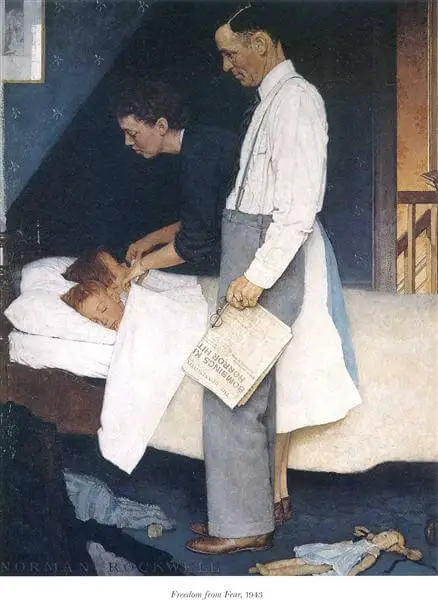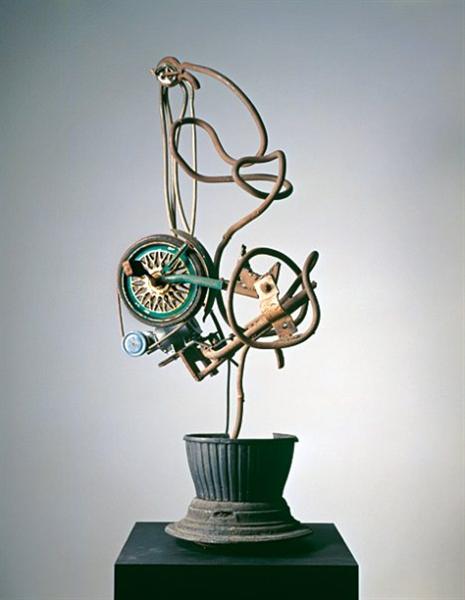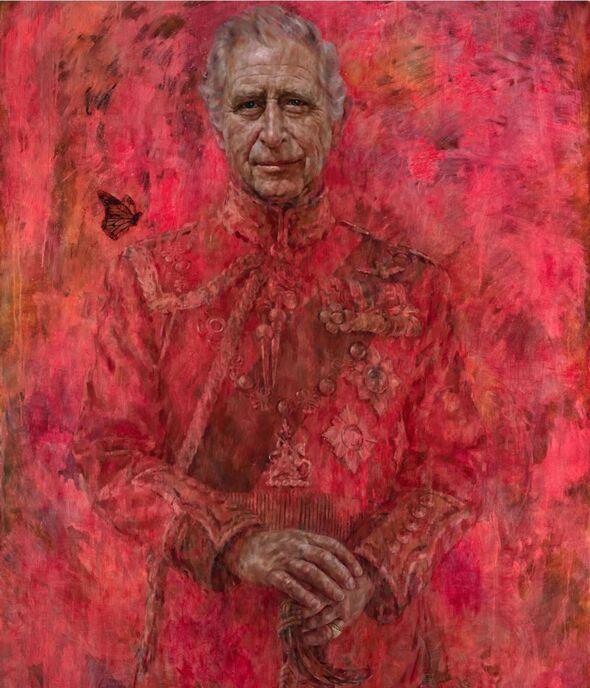Title of Artwork: “Freedom From Fear”


Artwork by Norman Rockwell
Year Created 1943
Summary of Freedom From Fear by Norman Rockwell
Freedom from Fear is the final oil painting produced by the well-known American artist Norman Rockwell as part of his series of paintings titled The Four Freedoms. The Four Freedoms are a set of objectives that were presented by President Franklin D. Roosevelt in his State of the Union Address on January 6, 1941. These objectives served as the basis for the television series.
Alongside an essay written by a prominent thinker of the time, Stephen Vincent Benét, this piece of work was published in the issue of The Saturday Evening Post that was dated March 13, 1943. According to the most common interpretation of the painting, it shows children in the United States being tucked into bed by their parents while, on the other side of the ocean, the Blitz is in full swing in Great Britain.
All About Freedom From Fear by Norman Rockwell
Freedom from Fear is the fourth and final oil painting that Norman Rockwell created as part of a series of four paintings he titled Four Freedoms. The works were influenced by a speech given by President Franklin D. Roosevelt on January 6, 1941, during his State of the Union Address before the 77th Congress of the United States of America.
The address itself is commonly referred to as the Four Freedoms. The concept of the “Four Freedoms” was eventually written into the Atlantic Charter, and it was later included in the charter that established the United Nations. In the beginning of 1943, a series of paintings were published in The Saturday Evening Post alongside essays written by renowned authors.
The paintings were published over the course of four consecutive weeks, beginning with “Freedom of Speech” on February 20, followed by “Freedom of Worship” on February 27, “Freedom from Want” on March 6, and “Freedom from Fear” on March 13. The posters from the series were eventually printed in large quantities and made a significant contribution to the United States Government’s Second World War Bond Drive.
During the course of the Second World War, Germany engaged in a prolonged campaign of strategic bombing against the United Kingdom known as the Blitz. Major aerial raids were launched against sixteen different cities in the United Kingdom between September 7, 1940 and May 21, 1941. Beginning on September 7, 1940, the Luftwaffe bombed London for a total of 57 consecutive nights.
During the Blitz, more than one million homes in London were either completely destroyed or severely damaged. Additionally, more than 40,000 civilians, almost half of whom were killed in London, were killed.
Children are depicted in the painting dozing off peacefully in their beds, oblivious to the dangers that exist in the outside world, while their parents watch from nearby. While their father reads about the atrocities that are being committed during the ongoing conflict in the newspaper, their mother tucks them into bed.
However, he is not paying any attention to the troubling news because he is focused entirely on his children. According to a different point of view, the children have already fallen asleep, and their parents are currently monitoring their status in the shared, cramped bed that they all use before retiring for the evening.
Within the context of the painting, the father is portrayed as the “classic Rockwell onlooker,” who acts in the capacity of an observer. We can deduce from the fact that he is finished reading the Bennington Banner that he is holding in his hand because he is holding his glasses.
The phrase “Bombings Ki… Horror Hit” appears in the headline of the newspaper, which is a reference to the Blitz. A well-lit corridor and a set of stairs leading down to the ground floor can be seen in the background.
According to Rockwell, who did not have a particularly positive opinion of the work, the central concept “was based on a rather smug idea.” It was supposed to say, “Thank God we can put our children to bed with a feeling of security, knowing they will not be killed in the night.” It was painted during the bombing of London, and it was supposed to say that.






















